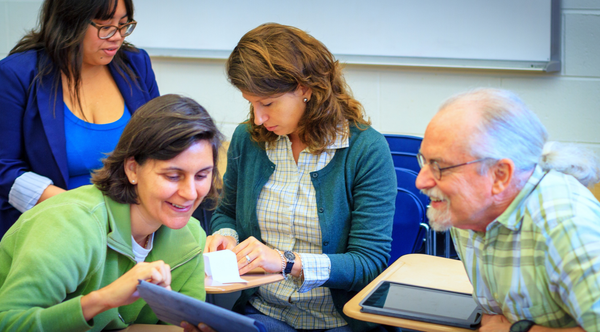What Are the Best Formative Assessment Strategies? A Guide for Teachers and Educators

Whether you're using exit tickets, online polls, or one-on-one check-ins, formative assessments can do much more than track progress; they can shape instruction in real time, support student engagement, and identify learning gaps before they expand.
In this article, we’ll walk through what formative assessments are, why they matter, and 10 strategies you can start using today to make your assessments more dynamic and responsive.
What Is a Formative Assessment?
Formative assessment is an ongoing process that helps you monitor student learning during instruction. Unlike summative assessments, which evaluate learning at the end, formative tools are used continuously to inform teaching and support students as they progress in their education.
You’re probably already using formative assessment, think of tools like think-pair-share, open-ended questions, or digital check-ins. These tools enable instructors to adjust lessons in real-time and provide immediate insights into student understanding. Common examples include:
- Exit tickets
- Class discussions
- Online quizzes
- Journal entries
- Peer feedback sessions
Each method gives a window into how students are processing the content. The goal isn’t grading, it’s guidance.
Why Do Formative Assessments Matter?
Formative assessments play a vital role in effective teaching. They help personalize learning, identify misconceptions early, and inform instructional decisions in real-time.
Create a Feedback Loop: Formative assessments facilitate effective communication between teachers and students, promoting a positive learning environment. It’s not just about data, it’s about dialogue that supports learning.
Identify Gaps Early: Formative tools make it easier to spot learning gaps before they become barriers. A quick quiz or discussion can reveal misconceptions you can address immediately.
Support Student Growth: When students receive ongoing feedback, they’re more likely to stay engaged and take responsibility for their learning. Regular check-ins help them track progress and set goals.
Guide Instruction: Formative assessments help you tailor lessons based on current student understanding. You can adjust the pace, revisit concepts, or offer targeted support before moving forward.
How to Choose the Right Formative Strategy
Not all strategies are effective in every setting. Choose your tools based on what you want to learn about your students, how your class responds, and the time and technology available to you.
Use the Data: Formative assessment only works if you respond to what you learn. Adjust your instruction, group students strategically, or reteach when necessary.
Adapt to Your Students: Choose strategies that resonate with your learners’ needs. Younger students may enjoy drawing or storytelling, while older students may benefit more from writing or participating in debates.
Keep It Manageable: Formative assessments should be quick to use and easy to interpret. Avoid tools that require heavy grading or setup unless they serve a clear instructional need.
Match with Your Goals: Want to check for understanding? Use a quiz or exit ticket. Want to support deeper thinking? Try journaling or peer discussion.
Common Mistakes to Avoid in Formative Assessment
To maximize the effectiveness of formative assessments, be aware of common errors that can diminish their impact.
Doing it without a clear purpose: Don’t assess just for the sake of it. Always know what insight you’re hoping to gain and how it will shape your next steps.
Ignoring student voice: Students can offer valuable insight into their learning if given the chance. Ask for their input, let them self-assess, and listen carefully to their responses.
Making it too formal: Keep formative assessments low-pressure. When students feel like they're taking tests, they sometimes get anxious, and results may be skewed.
Overloading yourself: You don’t have to use all ten strategies at once. Choose one or two that are easy to manage and build from there.
Not acting on the results: The biggest mistake is ignoring the feedback. If you collect data but continue to teach in the same way, the assessment loses value.
Final Thoughts: Making Formative Assessment Work for You
Formative assessment isn’t just a teaching tool; it’s a way to connect with your students and create a more responsive classroom. When used effectively, it helps uncover gaps, highlight areas for growth, and make learning more personalized.
The best part? It’s flexible, fast, and incredibly powerful. Whether you're using digital polls, peer feedback, or quick writes, formative assessment helps you meet your students where they are.
At Atomic Jolt, we’re committed to helping educators use technology that makes assessment easier and more meaningful. Discover our tools to integrate formative assessment into your daily teaching practice.



